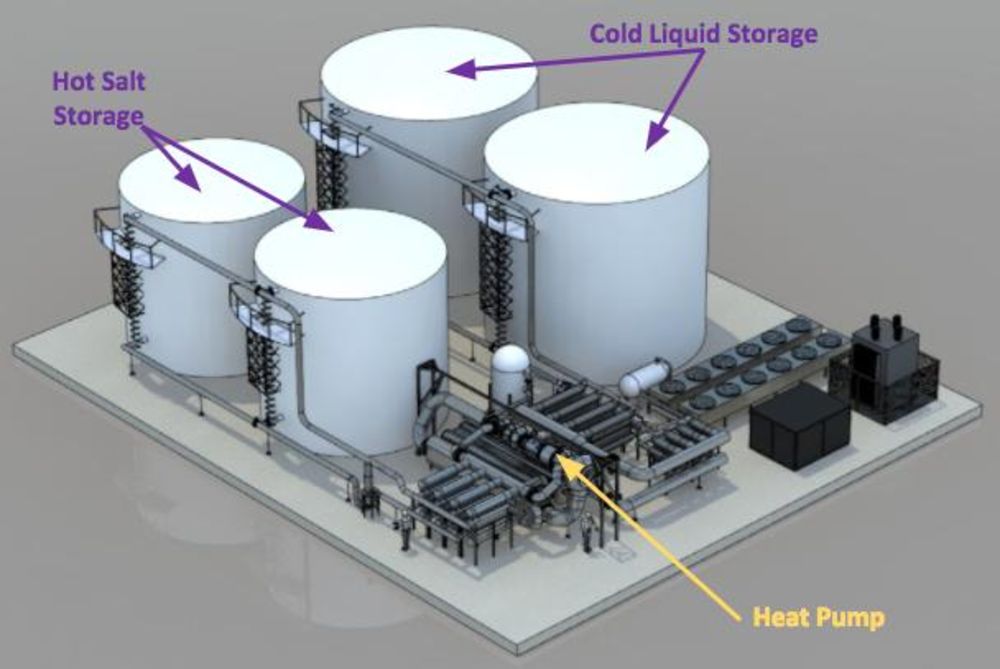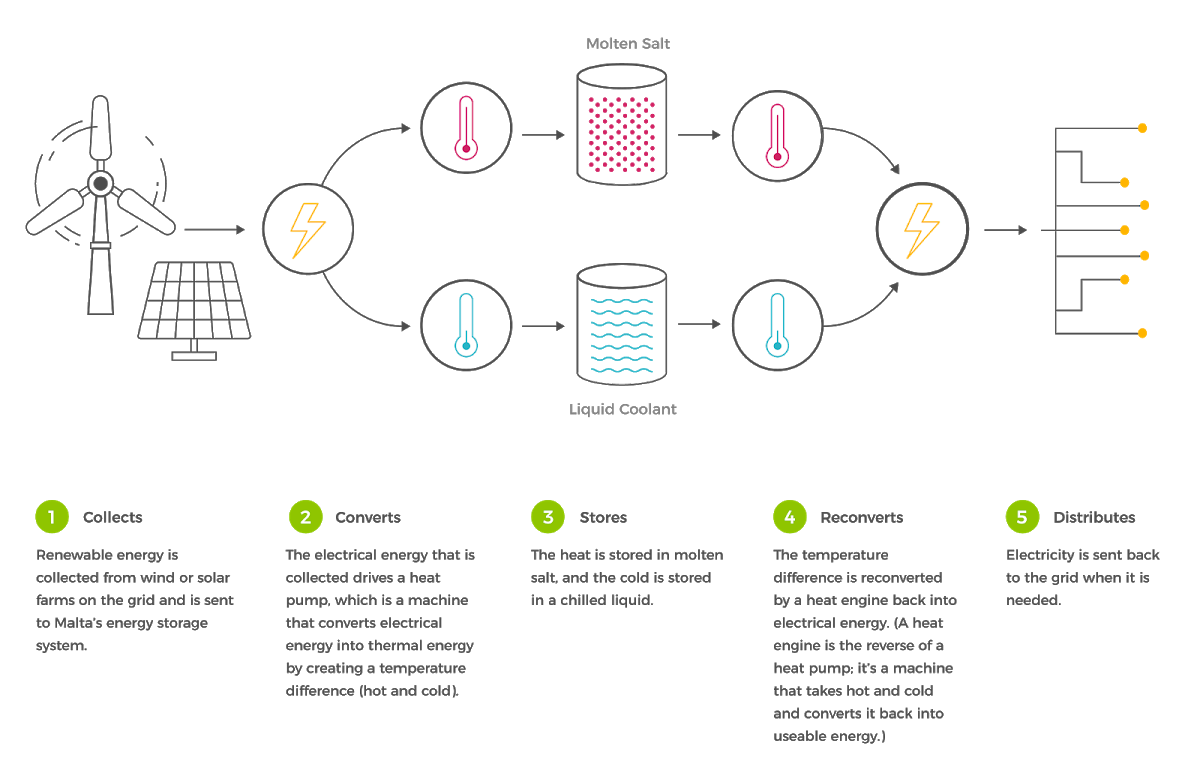Alphabet Holding's X Division will create energy storage in the form of molten salt and cooled liquid

Alphabet Holding, of which Google is a part, has an “X” division that deals with projects that look like pure fantasy. One of these projects is just about to be implemented. It is called Project Malta , and Bill Gates is going to take part in it. True, not directly, but through its foundation Breakthrough Energy Ventures. It is planned to allocate about $ 1 billion.
So far it is not clear when the funding will be allocated, but the intentions of all partners are more than serious. The idea of energy storage, part of which is a reservoir of molten salt, and part of which is a cooled coolant belongs to the scientist Robert Laughlin. He is a professor of physics and applied physics at Stanford University, Laughlin received the Nobel Prize in Physics in 1998.

The main idea of the entire project is to ensure the continuity of the supply of energy generated by alternative sources, primarily wind and sun. Yes, of course, there are various types of battery systems that allow you to store energy during the day and give it away at night or during periods of time that are problematic for alternative sources (cloudiness, calm, etc.). But they can store a relatively small amount of energy. If we talk about the scale of the city, region or country, then there are no such battery systems.
But they can be created using the idea of Laughlin. It provides the following structural elements:
- A source of “green” energy, such as a wind or solar power station, that transfers energy to the storage facility.
- Further, electric energy drives a heat pump, electricity is converted into heat, and two regions are formed - hot and cooled.
- Heat is stored in the form of molten salt, in addition, there is also a “cold reservoir”, this is a very cooled heat carrier (as an example).
- When energy is required, a “heat engine” is started (a system that can be called an anti-heat pump) and electricity is generated again.
- The required amount of energy is sent to the general network.

The patent for the technology has already been received by Laughlin, so now it's just a matter of technology and financing. The project itself can be implemented, for example, in California. About 300,000 kWh of energy generated by wind and solar power plants was “lost” here. The fact is that it was produced so much that it was not possible to save the entire volume. And this is enough to supply energy to more than 10,000 households.
A similar situation exists in Germany, where in 2015 4% of “wind” electricity was lost. In China, this figure generally exceeded 17%.
Unfortunately, representatives of "X" do not say anything about the possible cost of the project. It may well be that, provided proper implementation of the energy storage with salt and cooled liquid will be cheaper than traditional lithium batteries. However, now the cost of lithium-ion batteries is falling, the cost of “dirty” energy is also keeping at about the same level. So if the initiators of the Malta project want to compete with traditional solutions, they need to achieve a significant reduction in the cost per kilowatt in their system.
Whatever it was, the project is not far off, so that soon we will be able to find out all the necessary details.


